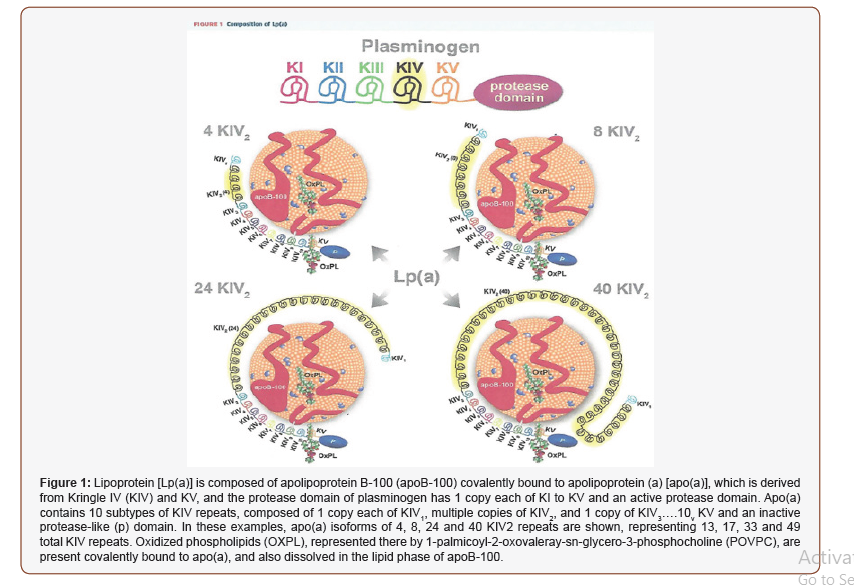 Case Report
Case Report
Lp (A) and Aortic Stenosis
Scott W Shurmur*
Department of Internal Medicine, University of Texas Tech Health Sciences Center, USA
Scott W Shurmur, Department of Internal Medicine, University of Texas Tech Health Sciences Center, USA.
Received Date: April 20, 2020; Published Date: April 27, 2020
Case Report
Lipoprotein (a), commonly called Lp “little a”, is composed of an LDL-like particle, with an apolipoprotein B component covalently bound to apo (a). The structure of the apo (a) portion is somewhat similar to plasminogen, though number and repetition of the “Kringle” portions differs [1]. The atherogenicity of Lp (a) is increasingly appreciated. Recent genetic study confirms its strong association with clinical atherosclerosis. Additionally, some iso form of Lp (a) are strongly associated with calcific aortic stenosis (Figure 1).

Specifically, SNP rs 10455872 is strongly associated with markedly elevated Lp (a) levels (greater than 50 mg/dl) and the only monogenetic risk factor linked to calcific aortic valve stenosis in multiple racial groups. Mechanistically, autotaxin, which is involved in the lysophosphatidylcholine pathway, appears to be a promoter of inflammation, fibrosis and cell motility [2]. Several clinical trials have shown an association of elevated Lp (a) levels, and increased rate of progression of calcific aortic stenosis. Therapies targeting Lp (a) are in development, including highly specific antisense oligonucleotides [1].
Acknowledgements
None.
Conflicts of Interest
No conflict of interest.
References
- Tsimikas S (2017) A Test in Context: Lipoprotein(a): Diagnosis, Prognosis, Controversies, and Emerging Therapies. J Am Coll Cardiol 69(6): 692-711.
- Bouchareb R, Mahmut A, Nsaibia MJ, Boulanger MC, Dahou A, et al. (2015) Autotaxin Derived From Lipoprotein(a) and Valve Interstitial Cells Promotes Inflammation and Mineralization of the Aortic Valve. Circulation 132(8): 677-690.
-
Scott W Shurmur. Lp (A) and Aortic Stenosis. On J Cardio Res & Rep. 4(1): 2020. OJCRR.MS.ID.000576.
-
Lipoprotein, Apolipoprotein B, Atherogenicity, Autotoxin, Lysophosphatidylcholine, Aortic stenosis
-

This work is licensed under a Creative Commons Attribution-NonCommercial 4.0 International License.






